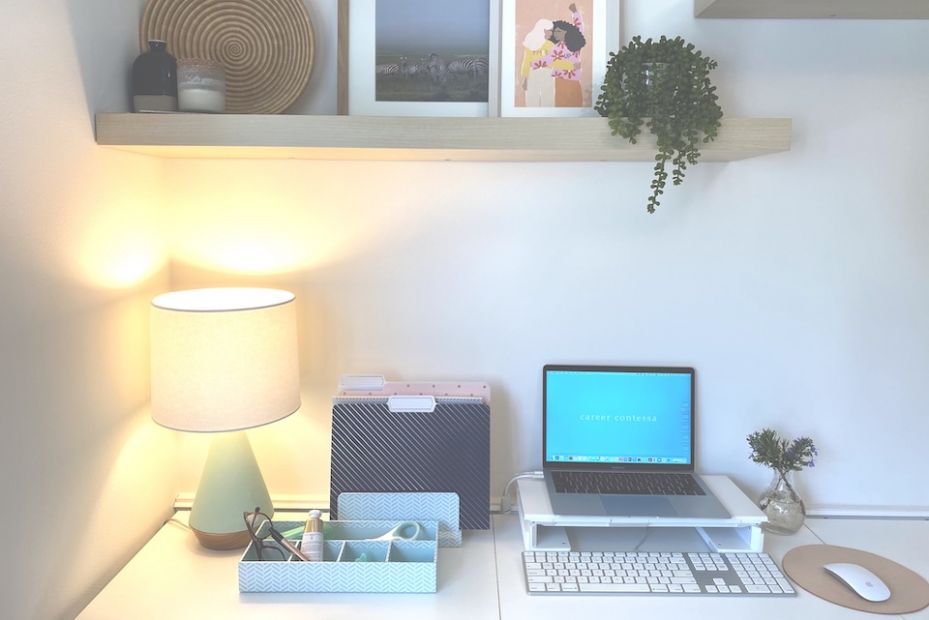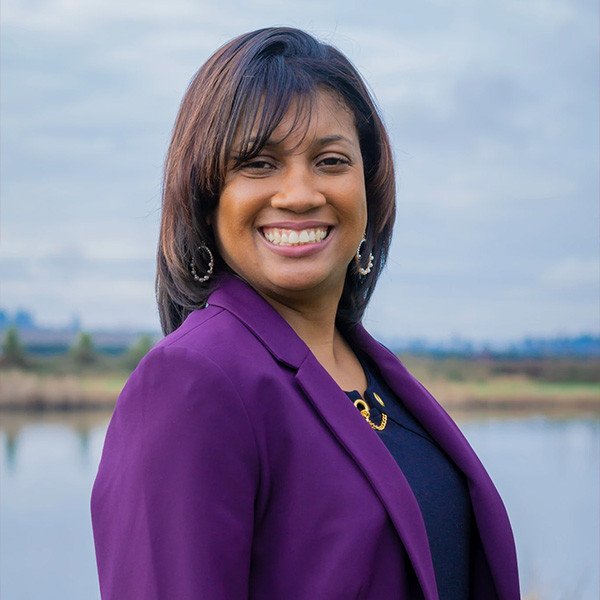I contemplated writing this piece.
Naturally, I am a very private person who understands that the same freedom to express oneself is not a right equally granted to Black women.
I’ve always felt a certain quiver in my voice when I speak up in predominately white settings—always feeling as if I am under a microscope. The pervasive feeling of always being watched is also known as the “
white gaze”—a gaze that judges my actions, behaviors, and the way in which I take up space. I have to walk a fine line between speaking up to show my competency but not speaking too much in order to show that I am friendly and diplomatic.
But within the last couple of months, I have had the unique opportunity to find a job in a department that is predominately Black and Brown—this opportunity has forced me to reckon with how much I yearned to be freed of the white gaze, and how therapeutic it is to express myself authentically and unapologetically without remorse or fear of judgment
The trauma of predominately white settings
Women of color continue to deal with some of the most deeply severe obstacles and barriers as they navigate their professional careers—from
pay inequity,
dealing with both hypervisibility and invisibility, and facing both racial and gender
microaggressions as they occupy positions in predominately white settings. Institutional discrimination is to blame for the lack of career advancement for women of color.
Many women of color also experience deep trauma as they
navigate predominately white settings—their qualifications are often looked down upon, and they are often perceived as less qualified than their white counterparts which leads many women of color to outperform and overperform to the point of near exhaustion and burnout.
"This sense of tug of war of trying to carve out your own space in white settings is entirely too burdensome."
We also fail to realize the deep psychological impact of always feeling as if you must contort yourself or change your behavior to fit into a culture that will never accept you fully. Throughout my professional career, I have been constantly reminded that I will never fit in, even with my high qualifications and credentials.
As women of color, we’re led to believe we’re too loud when we speak up, too direct when we assert ourselves, or too restrained if we don’t talk enough. When we do step out and share our experiences in predominately white settings—it’s painful. I have tried to be more authentic and expressive in predominately white spaces, but I have experienced too many instances of sharing my experiences and having white listeners shift the focus back onto themselves and shift the power and narrative back onto them.
This sense of tug of war of trying to carve out your own space in white settings is entirely too burdensome.
The Importance of Community to Women of Color
As a young Black professional, I always strive to cultivate a strong social
circle of women of color—a network of confidants who serve as both my shield and protector from the harsh reality of white settings.
We continue to trade stories about the trials and tribulations of being a professional Black woman, affirming each other's stories, uplifting and supporting each other, and speaking in a language that is only familiar to us. This is where I feel safe and at peace, where the two versions of myself are not in conflict. This type of tiptoeing that women of color must do between two different culturally opposing worlds is extremely taxing.
For women of color, and Black women in particular, community is of chief importance as we navigate predominately white and inherently anti-Black spaces.
"Black women need a reprieve from the anti-blackness and sexism in predominately white and male spaces."
Even during the Civil Rights Movement, Black women have been at the forefront of creating safe spaces and havens for their communities—these safe spaces have transitioned from our very own homes to Black hair salons and Black churches.
Black women need a reprieve from the anti-blackness and sexism in predominately white and male spaces. We know these spaces will never be created for us, so we must create these spaces ourselves. As a Black woman, it is critical to find a space that values both my blackness and my womanhood—a place where I can be affirmed and validated.
Black and Brown spaces—as healing spaces
In my current workplace, I find community—a shared experience, a common language, and the affirmation and support I need to navigate white settings that exist outside of our space.
We Build Affinity + Celebrate Blackness
We not only build affinity and coalitions around the struggles of being Black and Brown—but we celebrate Blackness in all of its forms loudly and unapologetically. While I am situated in a larger predominately white organization—my workspace has been critical in my own self-work.
It assists me in building the stamina and perseverance I need to continue to navigate the complexities of predominately white workplaces.
We Are Ourselves, Boldly + Authentically
I am given permission to be myself authentically—and I am learning to be less reserved in speaking up and speaking out. I am learning that my opinion matters, and I am learning to value my strengths as a professional, as opposed to viewing myself through a deficit lens.
Impostor syndrome doesn’t exist in this space—as I continue to be reminded daily of why my presence is valued and needed. The essence of who I am is celebrated, and I am able to take off the worry and fear that consumed me for most of my professional life. I am able to define myself on my own terms.
We Play to No Stereotypes
One thing that I have come to enjoy is that there is no expectation of how I should show up or what stereotypical role I, as a Black woman, should play. In predominately white settings, when conversations on race or social justice would arise, people would look towards me to be the spokesperson or somehow to carry the labor and burden of teaching white people about race.
I am able to explore the
multidimensionality of blackness and womanhood and explore the diversity in which I get to show up in spaces, and this is truly liberating. I am free from mainstream stereotypes. It wasn't until I joined a predominately Black and Brown space that I realized how much of my self I had lost and sacrificed due to the need to fit into white culture.
We Have a Protective—NOT a Segregative—Space
In a world that most people deem as colorblind or where race has no impact on one’s social and economic life outcomes—most people may equate Black-only spaces as segregationist—but really, these spaces are developed in response to oppression and racial hostility. These spaces act as protectors from daily incidences of racism, sexism, and white supremacy.
According to Sheryl Sandberg, women need to lean into their careers and be risk-takers so that we don't unintentionally hold ourselves back from career progression. Women of color, especially Black women, have always been exceptional risk takers—always defying the odds and transcending boundaries—but
career progression for Black women is inhibited by systemic discrimination.
My Advice to Women of Color? Be Daring. Be Bold. Be Ambitious.
Women of color have always been daring, bold, and ambitious—what they haven’t always had is spaces to call their own in the workplace—spaces where they can simply breathe—and spaces that are a source of their own healing and liberation.
These spaces are critical for allowing us to realize our highest potential and discover and express our true selves. We must continue to build up our armor and resiliency to navigate the harshness of the outside world.
"My advice is to women of color is to find your space of liberation and healing. Your mind, body, and soul depend on it."
Women of color have become so familiar with navigating predominately white spaces—that we even doubt whether we’re capable of bringing more of ourselves into a room, and many of us don’t know how.
We have accepted that assimilation must be necessary for career advancement—and this acceptance can be damaging as we forget what it means to bring our whole selves to the workplace.
My advice is to women of color is to find your space of liberation and healing. Your mind, body, and soul depend on it. And if you don’t ever get the opportunity to experience this in the workplace—create your own space of liberation—and nurture it.











